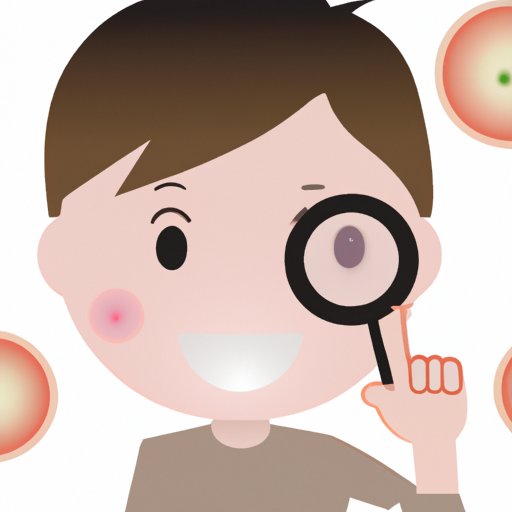
Introduction
In simple terms, a disease vector is any animal or insect that carries and transmits infectious diseases. They play a vital role in the spread of illnesses like malaria, dengue fever, and Lyme disease, among others. This article aims to provide readers with a comprehensive understanding of disease vectors, their biology and behavior, how they transmit disease, and prevention strategies that can be employed to avoid contact with them.
Understanding Disease Vectors: What Are They and How Do They Spread Illness?
Disease vectors are living organisms, including mosquitoes, ticks, fleas, and rodents, among others, that transfer pathogens, such as viruses and bacteria, from one infected host to another. For example, mosquitoes are known to carry malaria, while ticks are responsible for transmitting Lyme disease. These vectors spread diseases via their bite, feces, or bodily fluids.
It is essential to understand that not all mosquitoes or ticks spread infectious diseases. Only female mosquitoes spread the malaria parasite, while Lyme disease is spread by the deer tick. Additionally, the vector must bite an infected host before passing the pathogen onto the next host. Once infected, the disease can replicate inside the vector’s body, making them potential carriers for a long time.
It is also plausible for a vector to transmit the pathogen to the host directly, without being bitten. For example, the hantavirus can be found in rodent urine and feces, and people can contract the virus by inhaling the virus present in the air.
Uncovering the Complexities of Disease Vectors: A Scientific Perspective
Scientists have conducted extensive research to understand the biology and behavior of disease vectors to find ways to reduce their populations and prevent disease transmission. Vectors like mosquitoes have unique sensory organs that enable them to identify their hosts and locate breeding sites. These insects also have a short flight range, making their control very challenging in densely populated areas.
Several factors influence the transmission of infectious diseases via vectors. These include environmental factors, such as climate and urbanization, host immunity, and the pathogen’s virulence. Researchers have also found that some pathogens can alter the biology of their vector, making it more likely to infect a new host when it bites.
According to new scientific findings, monitoring disease vectors’ populations, coupled with early detection and diagnosis of infectious diseases, can help reduce the number of outbreaks. Additional research is also underway to find vaccines and other strategies to control disease vectors.
The Impact of Environmental Factors on Disease Vectors: A Comprehensive Analysis
The environment plays a crucial role in the distribution and breeding of disease vectors. Climate change, in particular, is expected to increase the range and incidence of many vector-borne diseases globally. Mosquitoes, for instance, thrive in warm and humid environments. Increased rainfall and temperature present an opportunity for more breeding sites for mosquitoes, which will propagate their numbers and subsequent risk of disease transmission.
Human activities also affect disease vectors’ growth and distribution. Agricultural practices like deforestation and irrigation contribute significantly to the emergence and spread of vectors like ticks and mosquitoes. Disrupting natural ecosystems causes animals to migrate and relocate, leading to contact with other animals and humans. Deforestation can also affect some vectors’ natural predators, creating an ecological gap that could be filled by other vectors.
Disease Vectors and Their Role in Transmitting Infectious Diseases: What You Need to Know
Vectors transmit a wide range of infectious diseases, and these diseases vary by region. Some common diseases transmitted by ticks include Lyme disease, tick-borne encephalitis, and Rocky Mountain spotted fever. Mosquitoes, on the other hand, transmit malaria, dengue fever, West Nile virus, and Zika virus, among others.
Different diseases come with varying symptoms and treatments. For example, malaria symptoms can range from mild to severe, and treatment usually involves medication, while Lyme disease treatment may involve antibiotics and other medications. It is crucial always to seek medical attention if you feel unwell after exposure to disease vectors.
Prevention is the most effective way of avoiding contact with disease vectors. Wearing protective clothing, applying insect repellent, and avoiding outdoor activities during peak vector activity periods are also effective precautions.
Breaking Down Disease Transmission: The Essential Guide to Disease Vectors
Disease transmission occurs when a pathogen is transferred from and infected host to a susceptible host. There are several ways that this can occur, including direct contact with bodily fluids, ingestion of contaminated water or food, and through vectors. Understanding the different modes of transmission is essential, particularly when developing public health strategies and surveillance systems.
Vector-borne diseases are transmitted through arthropods, including ticks, mosquitoes, and fleas. Symptoms of vector-borne diseases can appear quickly, or it could take days or weeks after infection before they appear. Early diagnosis and treatment are critical for preventing severe complications and long-term health problems.
The Threat of Disease Vectors and How Communities Can Protect Themselves from Outbreaks
The community plays a crucial role in preventing disease vector outbreaks. Public health interventions, such as vector control programs and vaccination campaigns, have been successful in the prevention and control of infectious diseases. Proper sanitation and hygiene practices can also help control disease vectors like rodents.
In conclusion, understanding disease vectors’ biology, behavior, and the diseases they transmit is critical in preventing the spread of infectious diseases. Prevention strategies that include early diagnosis and treatment, vaccination, and community engagement are essential in controlling vector-borne outbreaks.
Conclusion
This comprehensive guide to disease vectors has provided valuable information on the complexities of disease vectors and their role in transmitting infectious diseases. Understanding the factors that influence disease transmission, prevention strategies, and the importance of community action is crucial in controlling outbreaks and reducing the overall burden of vector-borne diseases worldwide.
We urge readers to take proactive measures to protect themselves and their communities from vector-borne diseases.




